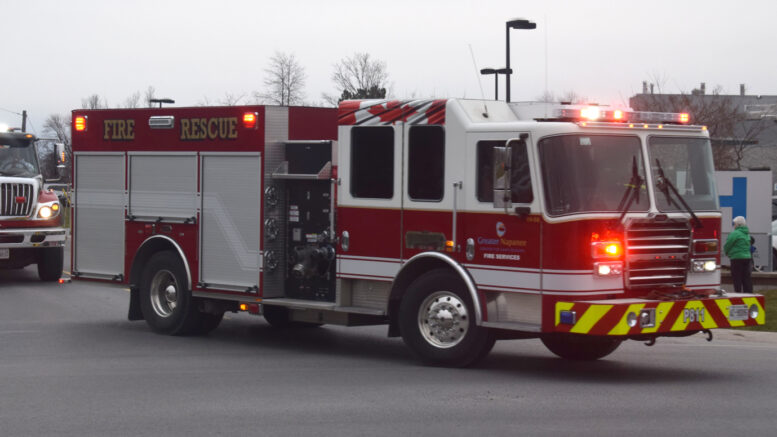Sarah Williamson
Beaver Staff
A possible, unforeseen consequence of the COVID-19 pandemic is the rise of fatal house fires across Ontario.
Since Jan. 1, fatal fires have increased across the province by 65 per cent.
“I urge you to be vigilant in preventing fires in your home, especially now with so many people at home practicing physical distancing because of COVID-19,” said Greater Napanee Emergency Services Fire Chief Rob Serson. “It’s just as important that you test your smoke alarms and practice your home fire escape plan.”
GNES fire prevention officer Kevin Duncan spoke with the Beaver about this worrying trend.
“We tend to have anywhere from 90-100 fatalities per year (across Ontario) and we’re already at 51. We’ve been pushing public education and prevention tips to let people know some basic preventative measures, such as smoke alarms,” noted Duncan. “But I think one of the main reasons there are more fatalities is because there are more people home. The number one cause of fires is related to cooking. With more people home, more people are cooking. This could be why the trend has gone up.”
Duncan stated that while fires have gone up a little bit, fatalities have gone up significantly. Meanwhile, he commented, the province is scrambling to figure out exactly why.
“Our first guess is because we’re spending more time at home than we ever have before,” he reiterated.
Some tips from GNES for avoiding fire are: always stay in the kitchen when cooking. Unattended cooking is a leading cause of home fires. Keep a close eye on anyone drinking alcohol and attempting to cook or smoke. Encourage smokers to smoke outside the home and outside the garage. Thoroughly extinguish all smoking materials in water or sand. Always blow out candles before leaving the room. Avoid overloading electrical outlets. Extension cords should be used only as a temporary connection. Avoid running electrical cords under rugs, which can damage the cords and cause a fire. Ensure items that can burn are at least one metre away from space heaters. Do not attempt to sterilize or decontaminate face masks for re-use by heating them in a microwave oven. Various fabric or metal components can overheat or create sparks and cause a fire if heated in a microwave.
As well, they urge everyone to make sure their smoke alarms are in working order. Some tips for this are: test smoke alarms monthly by pressing the test button. Only working smoke alarms can give the early warning needed to safely escape a fire in a home.
It is also imperative that each home has a fire escape plan. Tips for this include: ensure everyone knows two ways out of each room, if possible. All exits must be unobstructed and easy to use. Determine who will be responsible for helping young children, older adults and anyone who needs assistance to escape. Choose a meeting place outside, such as a tree or a lamp post, where everyone can be accounted for. Call the fire department from outside the home, from a cell phone or a neighbour’s home. Once out, stay out. Never re-enter a burning building. Anyone who lives in an apartment or high-rise building, talk to the building superintendent to learn about the emergency procedures outlined in the building’s fire safety plan.
“Only you can make sure these types of tragedies do not happen in Greater Napanee,” continued Serson. “You need to do everything you can to prevent a fire in your home.”

